Books
Available Books & Resources
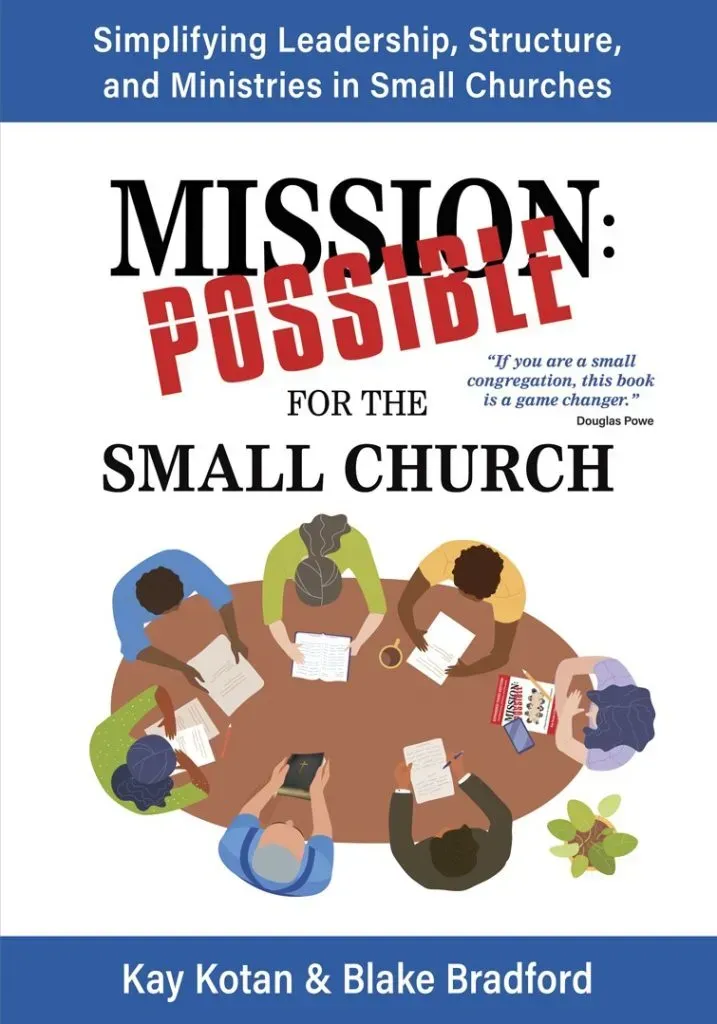
Mission Possible: For The Small Church
By Kay Kotan and Blake Bradford
The majority of churches in America are small churches. In fact, 70 percent of all congregations have memberships of less than a hundred people, and many are getting smaller. The median attendance has declined every year for the last two decades. It’s now less than half of what it was twenty years ago. A 2020 Faith Communities Today (FACT) study shows that half of US congregations have sixty-five people or fewer. Small churches have an amazing capacity to bounce back over and over again. They are resilient. Since they often have less than a full-time pastor, there is a strong laity leadership preference ready to step in and do what it takes. Small churches also have what we refer to as a superpower that large churches can’t touch: the ability to be highly relational from the get-go. Small churches that have discovered and know how to leverage this superpower are vital, healthy churches having God-sized impact in their communities. Too often, small churches concentrate on what they can’t do. We offer this resource to lift up what small churches can do! For example, smaller churches have greater percentages of participation, giving, and engaged members than larger churches, according to the 2020 FACT study. Unfortunately, many resources for churches and church leaders are created for larger churches.
This resource has been created specifically for the small church.
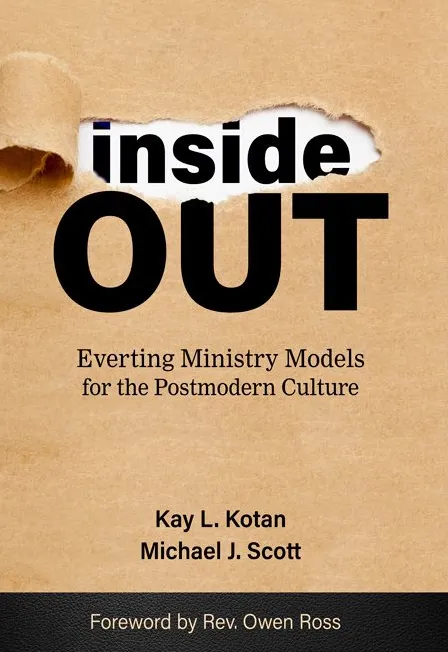
Inside Out: Everting Your Ministry Model for the Postmodern Culture
By Kay Kotan and Michael Scott
As a child, we were taught that the church was the building. While we intellectually understand that the church is the people, a congregation often makes decisions that lead us to believe that perhaps this is not the case. As we evert the church model for the postmodern, post-Christian world, we need to evert-turn inside out-many of our thoughts and beliefs about how we go about "doing" church. This is NOT about changing our beliefs but about changing how we engage in ministry.
There is urgent kingdom work that needs to be done. The postmodern, post-Christian world is suffering. People are more connected digitally than any prior generation but find themselves lonelier than ever before. Our neighbors seek hope, meaning, and a sense of community and belonging. Mental health is in crisis with staggering levels of depression and anxiety. While our neighbors struggle and need help, so many churches are ill-equipped for this work-the kind of work the church should be the very best at providing. After all, we have the Good News. Sadly, though, our methods of sharing this Good News and reaching others outside our congregations are no longer relevant, so it is as though the church is mute and the community culture is deaf or vice versa.
In Inside Out, authors Kay Kotan and Michael Scott unpack resources for the ever-emerging church in the American culture. If the church is to be relevant, compelling, and faithful in its commission to reach new people, we must embrace these trends and plot a new course to navigate them in our local contexts. The need for this navigation and course correction is critical, and the timing is urgent. We have no time to waste. The church has remained hesitant for too long as culture has charged forward by leaps and bounds. There is no more waiting. The time is now. The mission is too important to delay any longer.
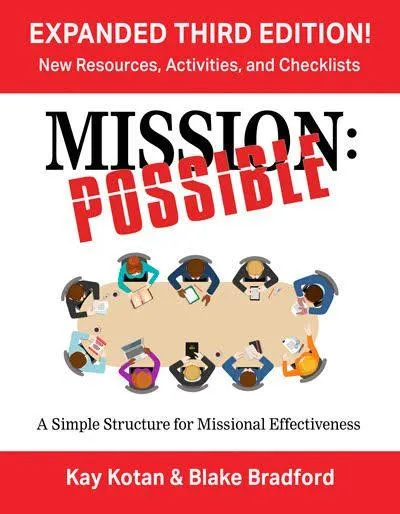
MISSION POSSIBLE 3+ EXPANDED 3RD EDITION
By Kay Kotan and Blake Bradford
Mission Possible, by Kay Kotan and Blake Bradford, has been taken to a new level. In
Mission Possible 3+, Kay and Blake have re-written and updated their best-selling resource for local churches to better assist congregations seeking to use the simplified, accountable leadership structure, often called the one-board model.
The authors remind the reader that meetings are not ministry. The idea of the simplified, accountable leadership structure is to focus on ministry while making meetings fewer in number but larger in meaning. In this third edition of the bestselling book aimed at congregational leaders, particularly United Methodists, the authors provide practical, field-tested steps to simplify your church structure, practice accountable leadership, and unleash more people into ministry.
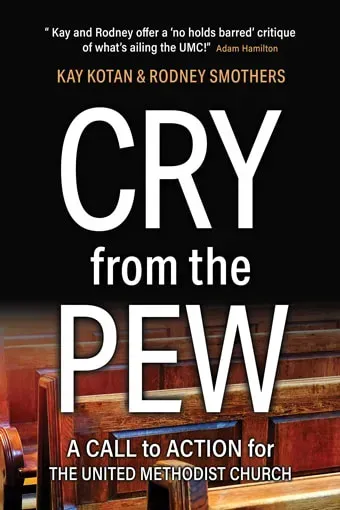
Cry From the Pew
By Kay Kotan and Rodney Smothers
Kay Kotan writes that her her goal in Cry From the Pew is to provoke a call to action and to create a sense of urgency for The United Methodist Church and its members to reach new people with a new vision for the church’s future. According to Kotan, the pandemic has created an opportunity for The United Methodist Church. Cry From the Pew has the potential to kickstart conversations, offer solutions, and provoke much-needed changes.
After each chapter written by Kay Kotan, readers will find a response by Dr. Rodney Smothers. Rodney’s lens is through the eyes of a clergy, male, African American, East Coast, and Boomer Generation. Kay’s is that of a layperson, female, white, Midwestern, Generation X. Following Rodney’s response, readers will find a series of questions.
In addition to personal reflection, perfect for use in a small group. There may be difficult conversations, topics covered with various theological perspectives, and differing opinions along the way. Frankly, that’s what the writers intended. Their request is that readers come to the table for conversation, listening carefully, speaking the truth in love, and desiring to find pathways to make disciples who transform the world.
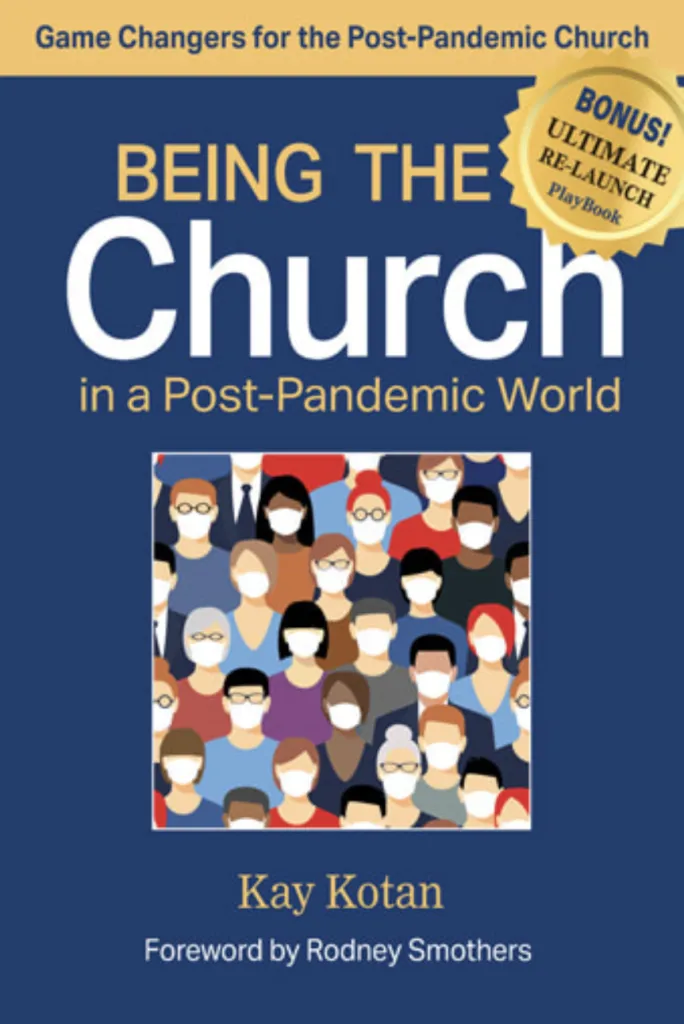
Being the Church in a Post Pandemic World
By Kay Kotan
Opportunity is born out of crisis. The global pandemic has been horrific. No one could have predicted such chaos to occur for so long. Yet, there is opportunity, the proverbial silver lining. Crisis is an accelerator. The church was catapulted into the digital future. Some churches had no choice but to embrace technology they once refused. The church learned there are more ways to offer worship than we had previously imagined. We learned it is possible to engage people in online ministry that might never become involved in on-site ministry.
The church learned that it could change, and it changed quickly. During a pandemic period, when everything seems to have turned upside down, there is an opportunity to stop some things that had not been working anyway, eliminate some things that were seemingly impossible in “normal” times, and start new things that might have been hard to imagine in the past.
As some churches began to resume on-site worship, another quandary came into being. How many of our folks will return? What does social distancing look like in a sanctuary with pews? How do we handle singing? What about the choir? Masks or no masks? What about our meet and greet time? How do we collect the offering?
As the church begins to emerge from the pandemic, our role is changing. It was already changing pre-pandemic, but the change is sure to escalate drastically post-pandemic.
This resource is designed to serve as a guide to what conversations might be helpful for you and your church’s leadership. This book is to be used as a tool, not an instrument of judgement or criticism. This resource was created out of a heart full of love for the local church and the hope it will be helpful in finding our next faithful steps to being the vital church in the post-pandemic world.
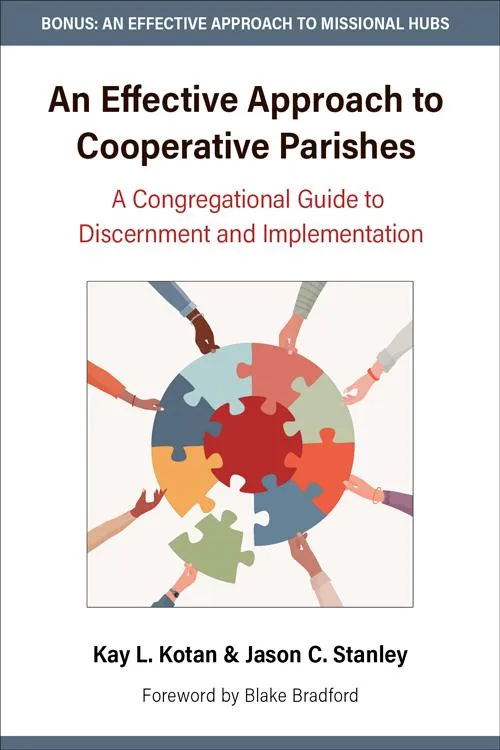
An Effective Approach to Cooperative Parishes: A Congregational Guide to Discernment and Implementation
By Kay Kotan and Jason Stanley
The earliest structure of Methodism in American history was communal and creative. The isolated frontier churches shared clergy and operated in cooperatives in which teams of itinerant circuit elders (usually a trainee and a slightly older mentor) would traverse the countryside on horseback preaching, visiting the sick, and holding the many classes and bands to task in their Christian discipleship.
The cooperative parish concept has been knocked around in the United Methodist Book of Discipline and annual conference staff organizational charts for decades. And yet, either out of fear, distrust, or selfishness, few congregations have seen fit to actually live into the possibilities of sharing ministry intentionally. Sure, churches may begrudgingly share a pastor when a district superintendent comes in for consultation and asks nicely. But the powerful impact of intentional regional ministry represented in the cooperative parish model is so much more than just operating as a charge for the clergy appointment-making purposes.
In An Effective Approach to Cooperative Parishes, Kay Kotan and Jason Stanley offer a roadmap for discernment and implementation for congregations to cooperate strategically and creatively to make a bigger Kingdom impact. Readers will be challenged, directed, and coached by the pages of this book. But all this work begins and finds momentum in the willingness of disciples to serve Christ together in community.
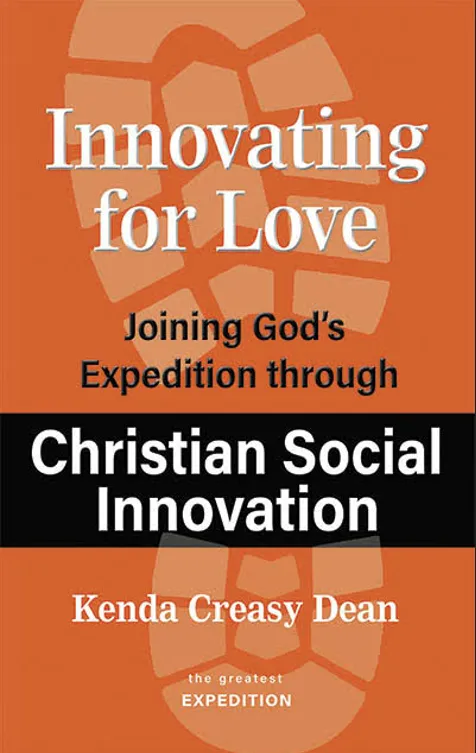
Innovating for Love: Joining God's Expedition Through Christian Social Innovation
Author Kenda Creasy Dean writes that starting with why is the wrong place for Christian ministry to begin. Human decision-making starts in a different place. “Starting with why” assumes a rational relationship between human cognition and human action: if we understand someone’s purpose, we will be persuaded to join them. What we do, writes Dean – buy an iPhone, join a cause, come to church, choose a side – has more to do with what we feel than what we think. Our model – and indeed, our power-source – for such a compassion-driven, grace-drenched version of humanity is Jesus. Our vocation always involves becoming more profoundly human, becoming more like Jesus, divinely wired and earthly-born, made from mud but bound for heaven, one with God and one with all the world. We are not called to build better churches. We are called to be better humans who reflect God’s love.
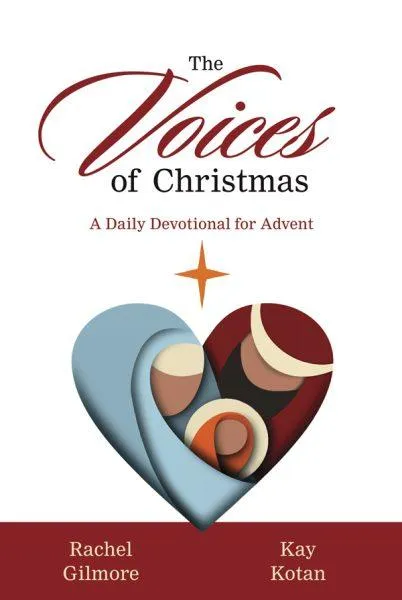
The Voices of Christmas: A Daily Devotional for Advent
Are you ready yet? Advent is a time to get ready to celebrate the birth of Christ. While many of us look forward to the activities of Christmas – from caroling to decorating Christmas trees and finding the perfect gift for someone special – the best gift we can give to God and ourselves is to take time each day to focus on what this season is all about.
Authors Rachel Gilmore and Kotan offer this daily devotional to help you explore the theme of “hope” more deeply. You are invited to join the authors on this journey of HOPE towards Christmas. Each week you will be offered a deeper insight into one of the four elements of HOPE:
Healing
Opportunities, especially opportunities to give and receive love
Peace
Experiences of joy
These themes are explored through the unique journeys of six prominent characters in the Christmas story. On the first day of each week you will be introduced to the theme and scripture of the week. On days two through six, we will explore the theme through the lenses of the characters and their voices, then offering reflective questions. On the seventh day of each week, you will find a summary of the week, as well as additional questions for your personal reflection or processing in your small group.
Advent can be a busy season for so many of us, with parties to attend, presents to buy and meals to prepare. Take time each day to slow down and explore these elements of HOPE, and by doing so, find hope born anew in you this year!

The Voices of Christmas: A Daily Devotional for Advent (HARDCOVER)
Are you ready yet? Advent is a time to get ready to celebrate the birth of Christ. While many of us look forward to the activities of Christmas – from caroling to decorating Christmas trees and finding the perfect gift for someone special – the best gift we can give to God and ourselves is to take time each day to focus on what this season is all about.
Authors Rachel Gilmore and Kotan offer this daily devotional to help you explore the theme of “hope” more deeply. You are invited to join the authors on this journey of HOPE towards Christmas. Each week you will be offered a deeper insight into one of the four elements of HOPE:
Healing
Opportunities, especially opportunities to give and receive love
Peace
Experiences of joy
These themes are explored through the unique journeys of six prominent characters in the Christmas story. On the first day of each week you will be introduced to the theme and scripture of the week. On days two through six, we will explore the theme through the lenses of the characters and their voices, then offering reflective questions. On the seventh day of each week, you will find a summary of the week, as well as additional questions for your personal reflection or processing in your small group.
Advent can be a busy season for so many of us, with parties to attend, presents to buy and meals to prepare. Take time each day to slow down and explore these elements of HOPE, and by doing so, find hope born anew in you this year!
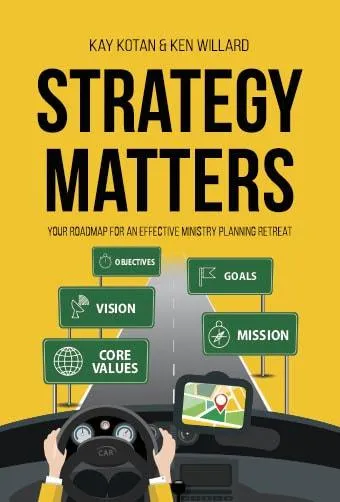
STRATEGY MATTERS: YOUR ROADMAP FOR AN EFFECTIVE MINISTRY PLANNING RETREAT
Many churches do a good job at planning activities, but this is often not producing the effective and fruitful ministries churches had hoped for or expected. Instead, churches must go beyond planning activities to intentional and strategic planning for the church to be faithful to its mission.
As Lisa Greenwood writes, “Kay and Ken are challenging leaders to take time to pay attention to what God is doing and saying in their community and in their own lives, so the church can focus on the difference God is calling them to make.”
This detailed and practical resource provides the step by step process for preparing, conducting, and following up for strategic ministry planning retreats that will lead your church into more effective, focused, and fruitful ministry.

LAUNCHING LEADERS
By Kay Kotan & Phil Schroeder
Why is leadership so important? Why do we need solid leadership in the church? Why do we hunger so much for effective leadership? Competent leadership provides direction, accountability, guidance, and support. Leaders also provide motivation and direction toward a common purpose and goals. Leaders are cheerleaders for productivity, effectiveness, and efficiency. Good leaders are role models and mentors for developing leadership in others. Leaders strengthen the people and organization they are serving. Without leadership there is no forward momentum. The people and organization become stuck at best and often times decline. Leaders point and lead people towards the organization’s vision. Leaders are equippers. Leaders not only manage change and conflict well, they are sometimes the ones that initiate it because it leads the organization in accomplishing its mission and vision.
This resource pushes the envelope of the expectations of a traditional church leader. After all, we believe we have a crisis in spiritual leadership because we have been, indeed, playing it too safe. It is time to equip, release, and encourage gutsy spiritual leaders! God’s Word calls for leaders and calls leaders.
Launching Leaders offers two sections. Section One provides an in-depth look at each of the gutsy leadership traits. Section Two offers the process of how to develop leaders. Section One gives you the what. Section two supplies the how. Since we have sufficiently covered the why, let’s develop some gutsy spiritual leaders for Christ!
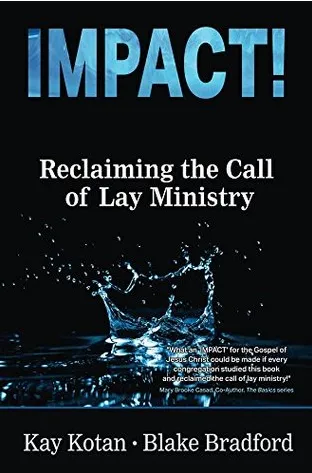
Impact: Reclaiming the Call of Lay Ministry
The ancient church spread rapidly throughout the Mediterranean world and, centuries later, the Methodist Church spread like wildfire on the American frontier thanks largely to lay Christians who shared the Christian faith in their homes and communities. Over time, our primary church leadership models have emphasized the leadership of the clergy and have devalued the ministry of the laity. IMPACT offers practical and proven plans to help clergy and laity partner together again to spread the Gospel in a new day and age!
The church likely rises and falls with the missional investment of the laity. So, of course, this book is for the laity. But, it is also for pastors and judicatory leaders. Our hope for this resource is to rekindle the spark and set the laity on fire – on fire for Christ. Our tribe, The United Methodist Church, was founded as a movement of laity and reached millions of people. Our hope and prayer is that this resource will help re-engage and empower the laity.
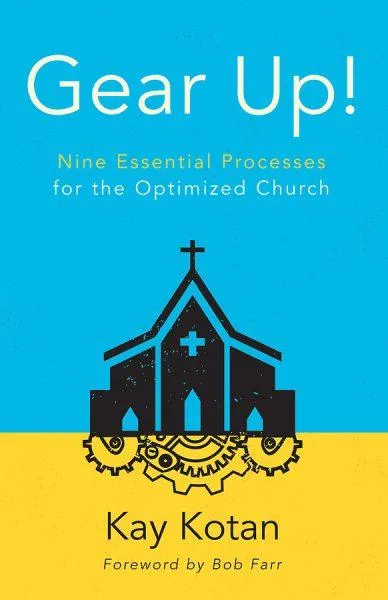
Gear Up!
Nine Essential Processes for the Optimized Church
Churches can only be as effective in their mission as their processes are that support the mission. This resource identifies the nine required processes to create a well-run disciple-making machine that a church needs to be. Learn how all nine gears sync together for the optimized church.
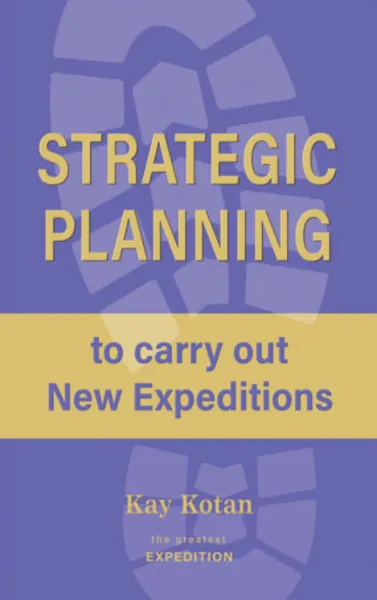
Strategic Planning to Carry Out New Expeditions
When we schedule a trip, we make plans. We first decide on our destination, then look for a place to stay.
Next, we will likely decide on the transportation for travel to our destination. After these major plans are made, we begin to plan activities and perhaps even delve into meal planning and restaurant reservations.
Before we head out, we likely look at blogs and websites for the places we plan to visit, to learn about the area and what it has to offer. We also prepare by packing clothes, shoes, and other necessities appropriate for our destination and planned activities.
Kotan writes that she often gets negative feedback when suggesting churches need to undertake strategic ministry planning. "I frequently receive looks of anguish, verbal 'ughs,' or perhaps even gagging sounds." Church leaders often have unfavorable feelings about strategic planning. They have been falsely led to believe that strategic planning is for corporations and not the church.
In Strategic Planning to Carry Out New Expeditions, Kotan shares five main components of a strategic ministry plan and how churches can begin their journeys by creating their own plans.
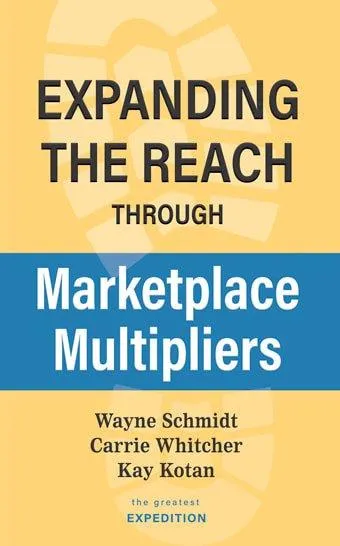
Expanding the Reach through Marketplace Multipliers
There is a growing “gospel gap” across North America and around the world. More people than ever do not have the opportunity to make an informed decision about Jesus or even know personally a follower of Christ. While we’re grateful for every spiritually interested seeker who begins their exploration by visiting a local church, much more often it is in the everyday places of life that they come into contact with those who winsomely and fully follow Christ. There has never been a significant movement of God without the significant engagement of lay people. When laypeople partner with pastors, the potential for Kingdom advancement intensifies. This leads to disciples making disciples (discipling disciples), people being empowered in faith, and equipped to grow so that God’s Spirit fills every part of them and ripples out into the lives around them. The authors of Marketplace Multipliers believe the marketplace, where believers and those yet to believe cross paths every day, provides an intersection for a multiplication movement.
Best-selling author Kay Kotan, Wayne Schmidt and Carrie Whitcher seek to be one example of “clergy and laity” partnering together in order to fulfill the Great Commission to “Go and make disciples”. This book is part of The Greatest Expedition series, aimed at providing assistant to congregations who want to do more than “stay in place,” but to move out into the world.
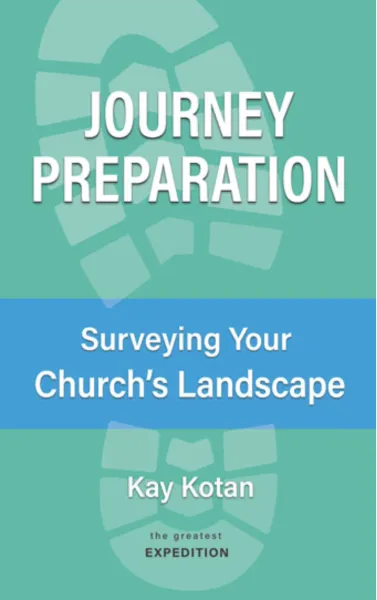
Journey Preparation: Surveying Your Church’s Landscape
Before we head in any direction, we must first have a starting point. What does the ground under our feet look like? Are we trying to hike mountains in flip-flops? Do we have a desire for something really cool to happen in the life of our church, but we do not have enough people willing to roll up their sleeves to make it happen?
Is honoring history and tradition more important than anything else?
Has method become the true north rather than the mission?
Is there a key influencer, matriarch, patriarch, or family in control of “their” family chapel?
In the life of the church, I like to refer to this as the current reality. The church has become distracted by the latest bells and whistles, personal preferences, lack of accountability, and being program-driven rather than missionally driven. If what the church is doing and spending its resources on is not making disciples, then why are we doing it? Yet, so many churches continue to do what they are doing without ever evaluating the effectiveness of their “doing.”
We have fooled ourselves into thinking that as long as we are a “busy” church then we must be an effective church. But, the real question to ask is if our busy-ness is fulfilling the mission.
How would you rate your church’s missional effectiveness currently? How effective is your church in its mission of making disciples who disciple others? How often is your council or board asking this foundational question? How are the leaders of your church trained to know the purpose of the church and to continue to ask the question and evaluate? How many adult professions of faith did your church have this year? Last year? Two years ago?
In Journey Preparation, Kay Kotan will lead the reader into a deep dive into a congregational assessment to ascertain the current lay of the internal land of his/her congregation.
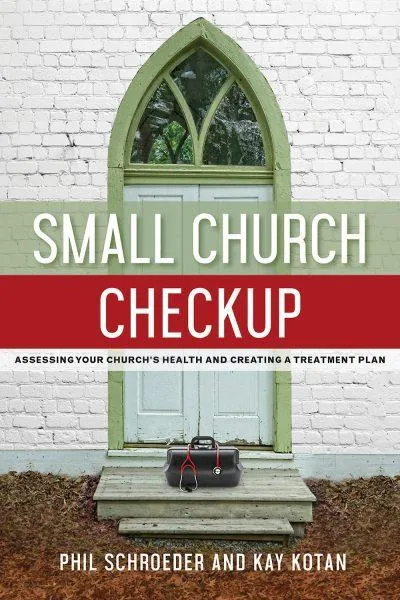
Small Church Check-Up
Assessing Your Church's Health and Creating a Treatment Plan
There are three types of small churches: not yet big small church, stable community church, and smaller church. Through a self-guided church assessment process, learn which of the three types of small church your church is and then choose one of the provided treatment plans for your church as a next faithful step.
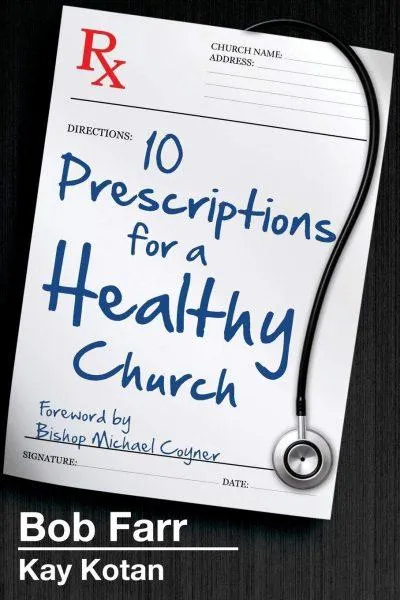
Ten Prescriptions for a Healthy Church
Over nearly a decade of hundreds of church consultations, patterns began to develop. There were common obstacles that many churches were struggling to overcome. In this book, we collected the top ten obstacles (aka prescriptions) we identified in those hundreds of consultations and share with each read the recommended remedy. Learn from the experiences of other churches!
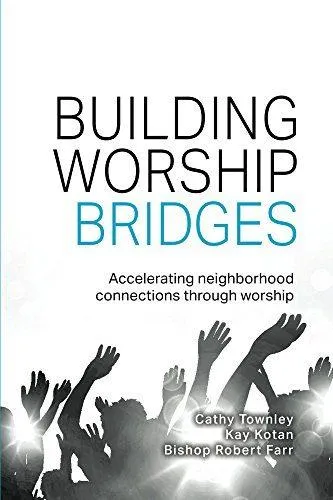
Building Worship Bridges
Accelerating neighborhood connections through worship
Worship services are to bring people into a worshiping community to praise God, be inspired, grow in their faith, be sent back out to share their faith with others, and bring people back with you into the next worship experience. There are multiple pieces in building this worship bridge from creating the worship experience, creating a worship design team, creating the worship order, calls to action, the relational aspects before, during and after, and so much more. This is a rich resource full of tactical and adaptive information to take your worship experience to a whole new level.
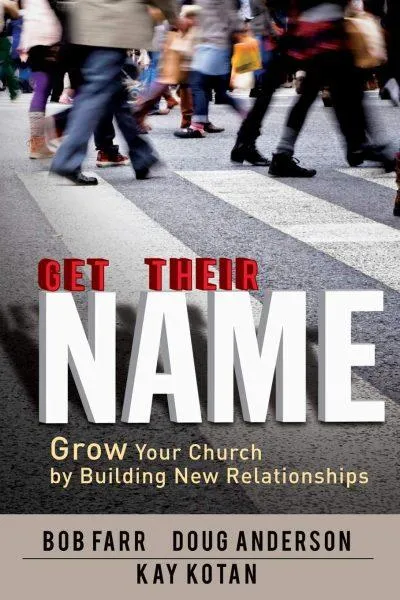
Get Their Name
Grow Your Church by Building New Relationships
Let’s face it. We church people struggle to share our faith. In this practical resource, learn how to share your faith story, become a 21st
century missionary, and prepare your church to receive guests. Not only is there a book, but there is a small group experience (participant and coordinator guides) with videos. If you or your church is struggling to reach new people, this is a must-read!

The Necessary Nine
Things Effective Pastors Do Differently
In working with pastors across the country, we identified nine things effective pastors do differently than non-effective pastors. We unpack those nine things and how they affect their leadership. In addition, we identify the two things effective congregations do differently. When those nine and two things come together, it is like lightening in a bottle!
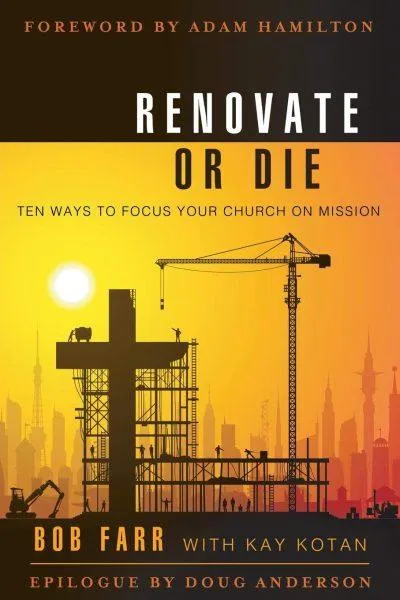
Renovate or Die
10 Ways to Focus Your Church on Mission
This is our first writing together on church revitalization. This resource sets the table for understanding why the church is in the shape it is in and why we need to not “redecorate” again, but we must renovate. We need to look beyond the surface and dive deep into the culture and processes inside a church in order to find energy, momentum, and a sense of urgency to reach new people once again for Christ.
Contact Us
